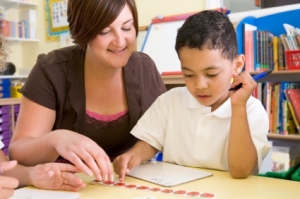Silent Period: Suggestions for the classroom teacher
Last week, we learned a little more about what is the the silent period and why is this a natural process in second language learning. Today, I’ll give some suggestions for classroom teachers who have second language learners in their classrooms and what to do to help them, if they suspect they are going through the silent period.
As we know children in the silent period should not be forced to speak before they are ready. They need time to listen to others talk, understand what they hear, and observe their peers’ interactions with each other. Even when they are silent, they are learning the language!
Here are some suggestions for the classroom teacher:
- Ask YES/NO questions: Allow the child to respond with nods of “yes” or “no”, this gives them the opportunity to participate in a non-threatening situation.
- Accept as response facial expressions and body language. Nonverbal cues such as eye contact, flipping through pages, writing, pointing, or grabbing our should be accepted as responses. Again, this allows them to feel welcomed without the pressure of saying it right.
- Share a word or two in the child’s language: This is also an opportunity to make the child feel welcome and gain trust.
- Pair them with a buddy who speak their language: Other children can help them understand the rules/routine of the classroom.
- Focus attention on listening comprehension activities/building a receptive vocabulary: Remember this is the natural process of language acquisition, so you are helping that process.
These are a few suggestions, to make the child feel welcomed, comfortable, without pressures, that will allow learning in a loving, caring environment.
Can you think of some other ideas?

Your comments